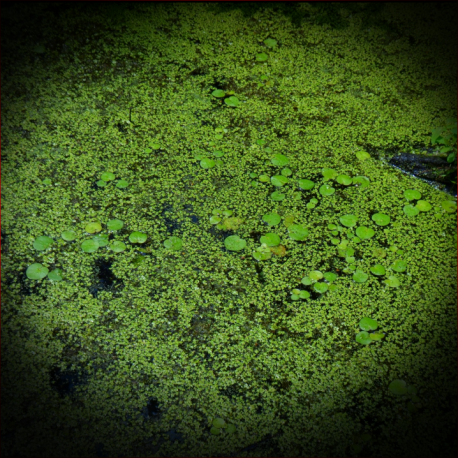More info
Datasheet
| Aquarium Compatible | yes |
| Plant Outdoor | yes |
| Plant Emersed Growth | yes |
| Plant Growth | fast |
| Temperature Tolerance | 4°C / 39.20°F - 27°C / 80.60°F |
| Temperature | 18°C / 64.40°F - 24°C / 75.20°F |
| Carbonate Hardness | 0-14 kh |
| pH Value | 5-8 ph |
| Light | medium-high |
| Carbon Dioxide (CO2) | 0-40mg/lmg/l |
| Nitrate (NO3-) | 10-50mg/lmg/l |
| Phosphate (PO43-) | 0.1-3mg/lmg/l |
| Potassium (K+) | 5-30mg/lmg/l |
| Iron (Fe) | 0.01-0.5mg/lmg/l |
General Description
Limnobium spongia, commonly known as North-American frogbit, is a floating aquatic plant that is native to regions from Canada through the south-eastern USA. It can be found in stagnant or slow-flowing waters, either floating on the surface or as a marsh plant in muddy ground. This species is not commonly cultivated today and is distinguished from Limnobium laevigatum by its heart-shaped leaves with a more pronounced tip.
Aquarium Suitability
Limnobium spongia is suitable for aquariums and is known for its ease of care, making it an excellent choice for both beginner and experienced aquarists. It is a fast-growing plant that can thrive in a variety of water conditions, as specified in the table below.
Demands and Hardiness
Limnobium spongia is an easy plant to maintain in aquariums, requiring medium to high lighting levels and a temperature range of 18-24°C. It has a wide tolerance for pH levels (5-8) and can withstand colder temperatures, with a tolerance range of 4-27°C. The plant can adapt to varying levels of carbon dioxide, nitrate, phosphate, iron, and potassium in the water.
Aquascaping & Usage
In aquariums, Limnobium spongia can be used as a floating plant to provide shade and cover for fish while also helping to improve water quality. Its free-floating rosette form adds a natural and aesthetic appeal to aquascapes, creating a more natural habitat for aquatic species.
Propagation
Limnobium spongia can be easily propagated through fragmentation or runners, making it a sustainable option for aquariums. Regular pruning and maintenance can help control its growth and prevent overcrowding in the tank.
Habitat and Distribution
This species is predominantly found in the eastern and southeastern regions of North America, where it thrives in still or slow-moving waters. Its natural habitat includes ponds, lakes, and marshy areas with muddy substrates. Limnobium spongia contributes to the ecological balance of aquatic ecosystems by providing shelter for aquatic organisms and helping to oxygenate the water.

